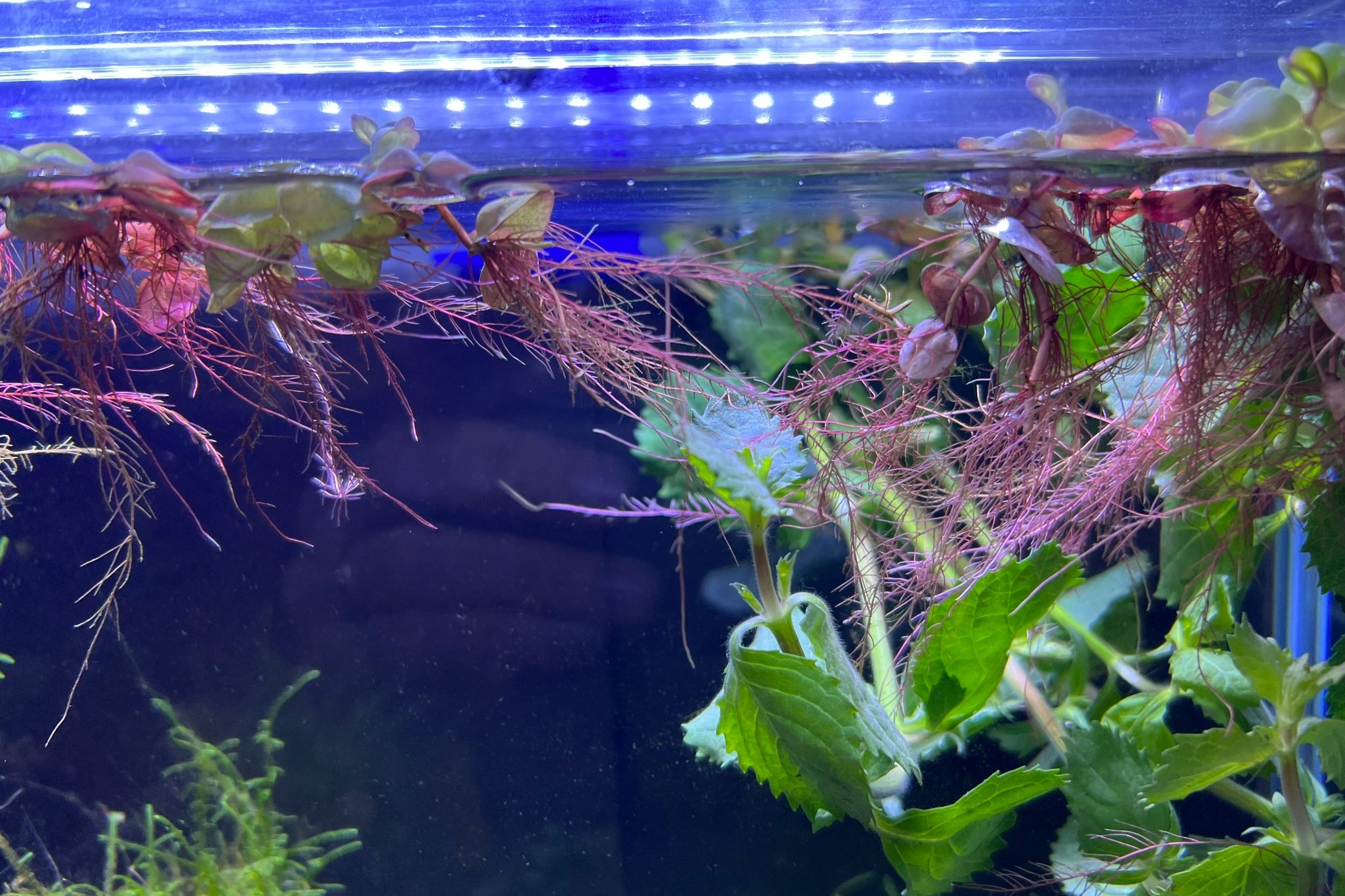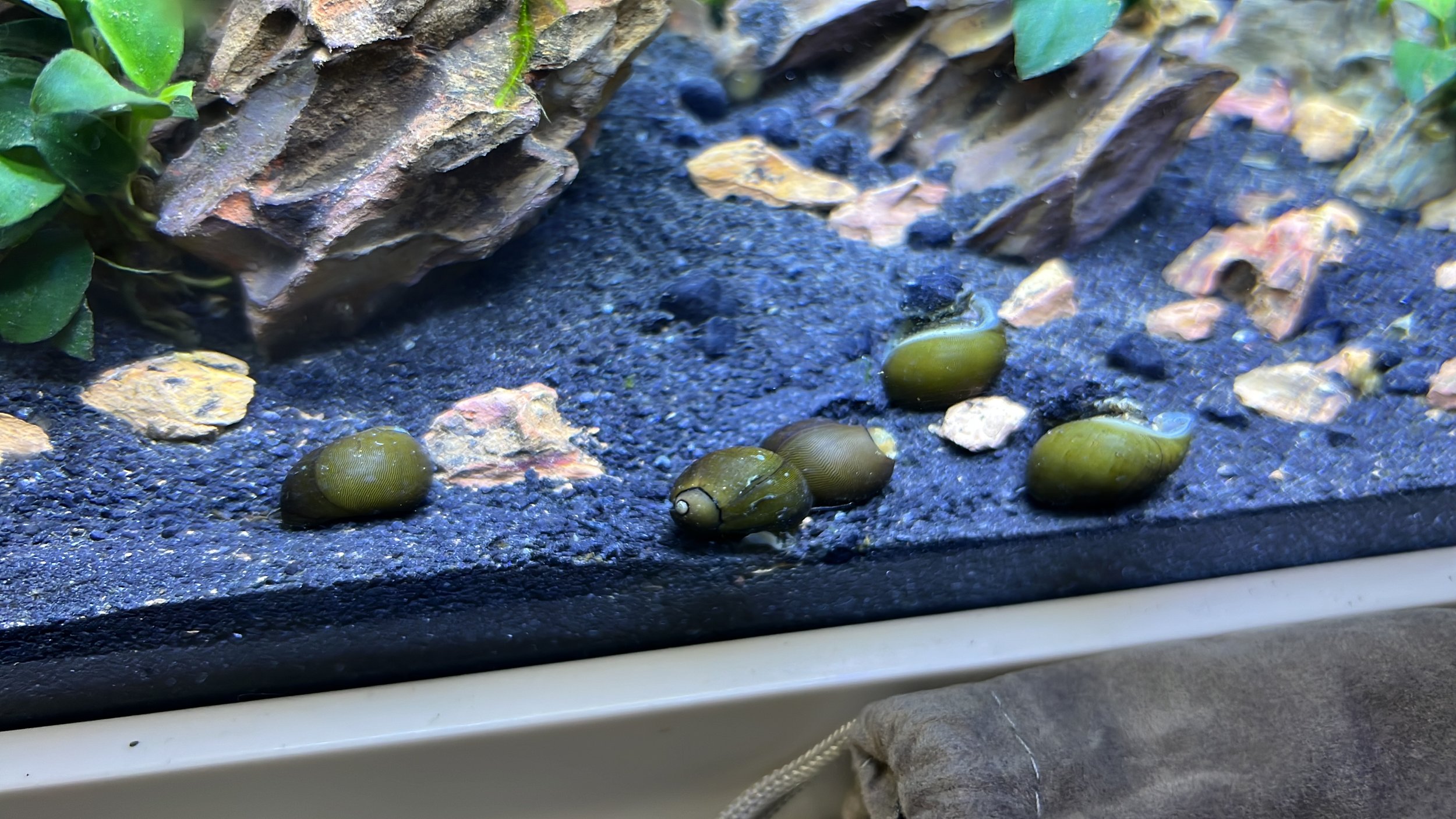Trying to Control Algae Growth in My Cycling Nano Aquarium
I've been reading a lot about aquariums and one of the things that has come up is algae growth. Algae is apparently very common in aquariums, especially when they are first starting out. I'm still in the cycling process, so I don't have any fish yet. And I've already begun to have some algae problems... the glass is starting to get a little green in spots and there are little stringy pieces of algae clinging to my plants. It's not ideal.
In researching, I learned a few things about algae. Algae need three things to grow: light, nutrients, and carbon dioxide. One of the problems with aquariums is that algae is extremely adaptive to a various array of water parameters. It also grows very quickly and can even double in population size in as little as 48 hours under the right conditions. It's important to recognize the issue early and figure out a plan to keep it in check.
It's also important to mention that you cannot 100% get rid of algae in your aquarium - algae is actually a very important part of a well-balanced aquarium ecosystem and performs several key functions. It helps to control bacteria populations, produces oxygen, and provides food for some aquarium inhabitants like snails and plecos.
So, how do you manage algae growth in a nano aquarium without the use of chemical additives? Here's my strategy that aligns with the 2 of the 3 things algae needs to grow.
Add something that competes with Algae for nutrients
Add something that competes with Algae for light
Add something that eats algae as its primary source of food
Add something that competes with Algae for nutrients
An obvious solution is to add more plants to your aquarium. More plants mean more competition for the same nutrients that algae need to grow. This can be accomplished by adding fast-growing aquarium plants or simply increasing the number of plants in your aquarium.
Since I had started with Java Fern and Anubias nana "petite", these are both relatively slow growing plants. I had done this on purpose, since one of my goals was to not have too much maintenance. slow growing plants will need to be trimmed less frequently.
I added Wysteria and Red Root Floaters. Wysteria is known for being fast growing and because it's a stem plant, I can easily propagate it by snipping off the top portion of the plant and replanting it elsewhere. The Red Root Floaters were chosen more for their function than aesthetics, although they are very cool looking! They will help to absorb nutrients in the water column before they have a chance to be taken up by algae.
Add something that competes with Algae for light
I really want to be able to have my aquarium lights on during the day, So I need something to complete for light. I got some floaters (don't laugh). In addition to sapping up nutrients from the water column, they will block some of the light from reaching the Algae, since they float at the top of the tank, with roots extending down.
Add something that eats algae as its primary source of food
I've added five nerite snails to the tank. These little guys are amazing algae eaters and they don't bother other plants in the aquarium. I've seen a noticeable difference in the algae growth since adding them. I added them in the early evening and they immediately started grazing like little Roombas! When I checked on them the following morning, they had cleared most of the algae off the glass, and the water was noticeably clearer!
Let me know if you have any good names for snails - these guys deserve names!
So - this is how I'm choosing to try to control algae growth in my aquarium without using chemicals. Add Wysteria to compete with Algae for nutrients, add Red Root Floaters to compete for light as well as nutrients, and add nerite snails to eat the algae that's left.
What do you think? Have you tried anything similar in your aquarium? Let me know in the comments below! Thanks for reading! Happy Hobbying! :)





